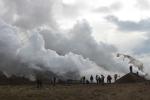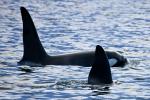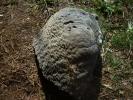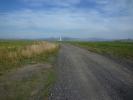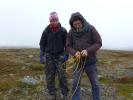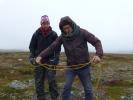Blog posts
Posts
A Hackers Manifesto, verze 4.0, kapitola 4.
By samotar, 10 January 2023
Alfred ve dvoře čili Poznámka k pražské hetero-utopii
By samotar, 10 November 2022
Trnovou korunou a tankem do srdíčka
By samotar, 2 July 2022
Hakim Bey - Informační válka
By samotar, 26 March 2022
Jean-Pierre Dupuy: Do we shape technologies, or do they shape us?
By samotar, 6 March 2022
Václav Cílek: Záhada zpívající houby
By samotar, 15 February 2022
Guy Debord - Teorie dérive
By samotar, 21 January 2022
Jack Burnham – Systémová estetika
By samotar, 19 November 2021
Poznámka pod čarou k výstavě Handa Gote: Věc, nástroj, čas, fetiš, hygiena, tabu
By samotar, 13 July 2021
Rána po ránech
By samotar, 23 May 2021
Na dohled od bronzového jezdce
By samotar, 4 March 2021
Z archivu:Mlha - ticho - temnota a bílé díry
By samotar, 7 October 2020
Zarchivu: Hůlna-kejdže
By samotar, 7 September 2020
Center for Land Use Interpretation
By samotar, 18 June 2020
Dawn Chorus Day - zvuky za svítání
By samotar, 30 April 2020
Z archivu: Bílé Břehy 2012 a Liběchov 2011
By , 3 April 2020
Z archivu: Krzysztof Wodiczko v DOXU
By samotar, 26 March 2020
GARY SNYDER: WRITERS AND THE WAR AGAINST NATURE
By samotar, 20 March 2020
Podoby domova: hnízda, nory, doupata, pavučiny, domestikace a ekologie
By samotar, 17 March 2020
Michel Serres: Transdisciplinarity as Relative Exteriority
By samotar, 5 November 2019
Pavel Ctibor: Sahat zakázáno
By samotar, 22 September 2019
Emmanuel Lévinas: HEIDEGGER, GAGARIN A MY
By samotar, 19 September 2019
Atmosférické poruchy / Atmospheric Disturbances - Ustí nad Labem
By samotar, 13 September 2019
Erkka Laininen: A Radical Vision of the Future School
By samotar, 10 August 2019
Anton Pannekoek: The Destruction of Nature (1909)
By samotar, 21 July 2019
Co padá shůry - světlo, pelyněk, oheň a šrot
By samotar, 30 December 2018
2000 slov v čase klimatických změn - manifest
By samotar, 2 November 2018
Vladimír Úlehla, sucho, geoinženýrství, endokrinologie, ekologie a Josef Charvát
By samotář, 22 September 2018
Lukáš Likavčan: Thermodynamics of Necrocracy - SUVs, entropy, and contingency management
By samotar, 20 July 2018
Tajemství spolupráce: Miloš Šejn
By samotar, 27 June 2018
Invisible Images (Your Pictures Are Looking at You) Trevor Paglen
By samotar, 2 June 2018
KŘEST KNIHY KRAJINA V POZORU: THE LANDSCAPE IN FOCUS.
By samotar, 18 May 2018
Případ zchudlé planety:Vojtěch Kotecký
By samotar, 22 April 2018
Rozhovor na Vltavě: Jak umění reaguje na dobu antropocénu?
By samotar, 10 March 2018
Skolt Sámi Path to Climate Change Resilience
By samotar, 10 December 2017
Brian Holmes: Driving the Golden Spike - The Aesthetics of Anthropocene Public Space
By samotar, 22 November 2017
Ohlédnutí/Revisited Soundworm Gathering
By samotař, 9 October 2017
Kleté krajiny
By samotar, 7 October 2017
Kinterova Jednotka a postnatura
By samotař, 15 September 2017
Ruiny-Černý trojúhelník a Koudelkův pohyb v saturnských kruzích
By samotar, 13 July 2017
Upsych316a Universal Psychiatric Church
By Samotar, 6 July 2017
Miloš Vojtěchovský: Krátká rozprava o místě z roku 1994
By milos, 31 May 2017
Za teorií poznání (radostný nekrolog), Bohuslav Blažek
By miloš vojtěchovský, 9 April 2017
On the Transmutation of Species
By miloš vojtěchovský, 27 March 2017
Gustav Metzger: Poznámky ke krizi v technologickém umění
By samotař, 2 March 2017
CYBERPOSITIVE, Sadie Plant a Nick Land
By samotař, 2 March 2017
Ivan Illich: Ticho jako obecní statek
By samotař, 18 February 2017
Dialog o primitivismu – Lawrence Jarach a John Zerzan
By samotar, 29 December 2016
Thomas Berry:Ekozoická éra
By samotař, 8 December 2016
Jason W. Moore: Name the System! Anthropocenes & the Capitalocene Alternative
By miloš vojtěchovský, 24 November 2016
Michel Serres: Revisiting The Natural Contract
By samotař, 11 November 2016
Best a Basta době uhelné
By samotař, 31 October 2016
Epifanie, krajina a poslední člověk/Epiphany, Landscape and Last Man
By Samotar, 20 October 2016
Doba kamenná - (Ein, Eisen, Wittgen, Frankenstein), doba plastová a temná mineralogie
By samotař, 4 October 2016
Hledání hlasu řeky Bíliny
By samotař, 23 September 2016
Harrisons: A MANIFESTO FOR THE 21ST CENTURY
By , 19 September 2016
T.J. Demos: Anthropocene, Capitalocene, Gynocene: The Many Names of Resistance
By , 11 September 2016
Bratrstvo
By samotař, 1 September 2016
Neptunismus a plutonismus na vyhaslé sopce Bořeň
By , 14 August 2016
Murray Bookchin: Toward an Ecological Society/ K ekologické společnosti (1974)
By samotař, 31 July 2016
Metafory, endofyzika, manželé Themersonovi a Gordon Pask
By samotař, 15 July 2016
Anima Mundi Revisited
By miloš vojtěchovský, 28 June 2016
Simon A. Levin: The Evolution of Ecology
By samotař, 21 June 2016
Anna Remešová: Je možné představit si změnu?
By samotar, 20 June 2016
Jan Hloušek: Uranové město
By samotař, 31 May 2016
Josef Šmajs: Složí lidstvo zkoušku své racionální dospělosti?
By samotař, 20 May 2016
Manifest The Dark Mountain Project
By Samotar, 3 May 2016
Pokus o popis jednoho zápasu
By samotar, 29 April 2016
Václav Cílek: Antropocén – velké zrychlení světa
By Slawomír Uher, 23 April 2016
Nothing worse or better can happen
By Ewa Jacobsson, 5 April 2016
Real Reason we Can’t Stop Global Warming: Saskia Sassen
By , 18 March 2016
The Political Economy of the Cultural Commons and the Nature of Sustainable Wealth
By samotar, 12 March 2016
Jared Diamond - Easter's End
By , 21 February 2016
Felix Guattari - Three Ecologies (part 1)
By , 19 February 2016
W. H. Auden: Journey to Iceland
By , 9 February 2016
Jussi Parikka: The Earth
By Slawomír Uher, 8 February 2016
Brian Holmes: Extradisciplinary Investigations. Towards a New Critique of Institutions
By Stanislaw, 7 February 2016
Co číhá za humny? neboli revoluce přítomnosti
By Miloš Vojtěchovský, 31 January 2016
Podivuhodný osud polárníka a malíře Julia Payera
By , 23 January 2016
Red Sky: The Eschatology of Trans
By Miloš Vojtěchovský, 19 January 2016
#AKCELERACIONISTICKÝ MANIFEST (14. května 2013)
By samotar, 7 January 2016
The Forgotten Space: Notes for a Film
By , 7 January 2016
Rise and Fall of the Herring Towns:Impacts of Climate and Human Teleconnections
By , 25 December 2015
Hlubinná, temná, světlá i povrchová ekologie světa
By , 22 December 2015
Three short movies: Baroque Duchcov, New Lakes of Mostecko and Lignite Clouds
By Michal Kindernay, 21 December 2015
Lenka Dolanová: Umění mediální ekologie
By , 21 December 2015
Towards an Anti-atlas of Borders
By , 20 December 2015
Pavel Mrkus - KINESIS, instalace Nejsvětější Salvátor
By Miloš Vojtěchovský, 6 December 2015
Tváře/Faces bez hranic/Sans Frontiers
By Miloš Vojtěchovský, 29 November 2015
Josef Šmajs: Ústava Země/A Constitution for the Earth
By Samotar, 28 November 2015
John Jordan: The Work of Art (and Activism) in the Age of the Anthropocene
By Samotar, 23 November 2015
Humoreska: kočky, koulení, hroby a špatná muška prince Josefa Saského
By Samotar, 13 November 2015
Rozhovor:Před věčným nic se katalogy nesčítají
By Samotar, 11 November 2015
Lecture by Dustin Breiting and Vít Bohal on Anthropocene
By Samotar, 8 November 2015
Antropocén a mocné žblunknutí/Anthropocene and the Mighty Plop
By Samotar, 2 November 2015
Rory Rowan:Extinction as Usual?Geo-Social Futures and Left Optimism
By Samotar, 27 October 2015
Pavel Klusák: Budoucnost smutné krajiny/The Future of a Sad Region
By ll, 19 October 2015
Na Zemi vzhůru nohama
By Alena Kotzmannová, 17 October 2015
Upside-down on Earth
By Alena Kotzmannová, 17 October 2015
Thomas Hylland Eriksen: What’s wrong with the Global North and the Global South?
By Samotar, 17 October 2015
Nýey and Borealis: Sonic Topologies by Nicolas Perret & Silvia Ploner
By Samotar, 12 October 2015
Images from Finnmark (Living Through the Landscape)
By Nicholas Norton, 12 October 2015
Bruno Latour: Love Your Monsters, Why We Must Care for Our Technologies As We Do Our Children
By John Dee, 11 October 2015
Temné objekty k obdivu: Edward Burtynsky, Mitch Epstein, Alex Maclean, Liam Young
By Samotar 10 October 2015, 10 October 2015
Czech Radio on Frontiers of Solitude
By Samotar, 10 October 2015
Beyond Time: orka, orka, orka, nečas, nečas, nečas
By Samotar, 10 October 2015
Langewiese and Newt or walking to Dlouhá louka
By Michal Kindernay, 7 October 2015
Notice in the Norwegian newspaper „Altaposten“
By Nicholas Norton, 5 October 2015
Interview with Ivar Smedstad
By Nicholas Norton, 5 October 2015
Iceland Expedition, Part 2
By Julia Martin, 4 October 2015
Closing at the Osek Monastery
By Michal Kindernay, 3 October 2015
Iceland Expedition, Part 1
By Julia Martin, 3 October 2015
Finnmarka a kopce / The Hills of Finnmark
By Vladimír Merta, 2 October 2015
Od kláštera Osek na Selesiovu výšinu, k Lomu, Libkovicům, Hrdlovce a zpět/From The Osek Cloister to Lom and back
By Samotar, 27 September 2015
Sápmelažžat Picnic and the Exploration of the Sami Lands and Culture
By Vladimir, 27 September 2015
Gardens of the Osek Monastery/Zahrady oseckého kláštera
By ll, 27 September 2015
Workshop with Radek Mikuláš/Dílna s Radkem Mikulášem
By Samotářka Dagmar, 26 September 2015
Czech Radio Interview Jan Klápště, Ivan Plicka and mayor of Horní Jiřetín Vladimír Buřt
By ll, 25 September 2015
Bořeň, zvuk a HNP/Bořeň, sound and Gross National Product
By Samotar, 25 September 2015
Já, Doly, Dolly a zemský ráj
By Samotar, 23 September 2015
Up to the Ore Mountains
By Michal, Dagmar a Helena Samotáři , 22 September 2015
Václav Cílek and the Sacred Landscape
By Samotář Michal, 22 September 2015
Picnic at the Ledvice waste pond
By Samotar, 19 September 2015
Above Jezeří Castle
By Samotar, 19 September 2015
Cancerous Land, part 3
By Tamás Sajó, 18 September 2015
Ledvice coal preparation plant
By Dominik Žižka, 18 September 2015
pod hladinou
By Dominik Žižka, 18 September 2015
Cancerous Land, part 2
By Tamás Sajó, 17 September 2015
Cancerous Land, part 1
By Tamás Sajó, 16 September 2015
Offroad trip
By Dominik Žižka, 16 September 2015
Ekologické limity a nutnost jejich prolomení
By Miloš Vojtěchovský, 16 September 2015
Lignite Clouds Sound Workshop: Days I and II
By Samotar, 15 September 2015
Recollection of Jezeří/Eisenberg Arboretum workshop
By Samotar, 14 September 2015
Walk from Mariánské Radčice
By Michal Kindernay, 12 September 2015
Mariánské Radčice and Libkovice
By Samotar, 11 September 2015
Tušimice II and The Vicarage, or the Parsonage at Mariánské Radčice
By Samotar, 10 September 2015
Most - Lake, Fish, algae bloom
By Samotar, 8 September 2015
Monday: Bílina open pit excursion
By Samotar, 7 September 2015
Duchcov II. - past and tomorrow
By Samotar, 6 September 2015
Duchcov II.
By Samotar, 6 September 2015
Arrival at Duchcov I.
By Samotar, 6 September 2015
Poznámka k havárii rypadla KU 300 (K severu 1)
By Samotar, 19 August 2015
Beyond Time: orka, orka, orka, nečas, nečas, nečas
Orka sounds like the Icelandic word for to cry (plakat) and energy. Háhyrningur is the Icelandic word for orca, meaning high horn in reference to the tall male dorsal fin. Nečas is the Czech word for bad weather, but as well for something timeless. unaffected or unchanged by time; ageless. There is no translation beside of NO-TIME.
The material for this rather improvized radio sketch is composed from the recordings from several places in North Bohemia and Iceland: the Ko-hi-nor brown coal mine, Cloister in Osek, the Bílina open pit mine, Tušimice II. open pit mine, sounds of wind in fences from Seydisfjodur (provided kindly by Krzysztof Topolski) and from the sound archive of the Departement of Phonetics at UCLA.
Examples of pronounciation of vowels, consonants sérhljóðar og samhljóðarin , vokaler og konsonanter in Czech, Icelandic and Norwegian language is meant as the challenge to improve the understanding each other for participants of expeditions to Finnmark, Most Basin and Iceland.
But for You, dear Reader as well!
About the splitting of Norwegian and Icelandic language
Most of the settlers in the 9th century came from Norway, some of whom took female slaves from Ireland on the way. During the first centuries, the same language was spoken in Norway and Iceland. The vocabulary was mostly Norse, with the exception of a several Celtic loan words. Up to the 13th century, the difference between the languages grew and accelerated in the 14th century. Changes appeared in the Icelandic sound system that were not seen in Norwegian and the Norwegian inflections became considerably simpler. There were changes throughout the centuries in both the Icelandic vowel and consonant systems. The vowel system changed in such a way that sounds merged (e.g. i and y, í and ý) and there were various changes to the consonant system. There have also been changes in inflections from the ancient language.
After the uptake of Christianity in the 11th century, the Icelandic vocabulary increased significantly. New words were needed for religious concepts, some of which were taken from Greek or Latin, others from Germanic languages, though most were probably taken as loan words from other Scandinavian languages. For example one could mention kirkja, biskup, prestur, altari, engill, klaustur. The word synd is considered to be a loan word from old Saxon and guðspjall from ancient times.
English influence on Icelandic began significantly during the occupation in the 2nd World War when many Icelanders had daily communications with British and then later, American soldiers. One more factor in the development of Icelandic vocabulary needs to be mentioned and that is the practice of coining words: using the words þyrla, þota, gámur, sími, sjónvarp, tölva for the words helicopter, jet, container, telephone, television, computer.
There is unfortunatelly no influence by Czech language recorded beside the term robot
To improve mutual understanding of artists and curators involved in the ongoing Solitude project, here see as well translation of the Czech anthem into Norwegian (made by Google translate algorithm)
Hvor er mitt hjem,
der er mitt hjem?
Vann brøler over engene,
Pinewoods rasle blant knauser,
i frukthagen med våren blomstre,
paradis på jorden for å vise!
Og det er et vakkert land,
Den tsjekkiske land, mitt hjem,
Den tsjekkiske land, mitt hjem.
Into Icelandic
Hvar á ég heima,
þar á ég heima?
Vatn öskrar yfir engi,
Pinewoods rustle meðal brekkunum
í Orchard með vor blóma,
Paradise á jörðinni til að skoða!
Og það er fallegt land,
tékk land, heimili mitt,
Tekk land, heimili mitt.
and
The Icelandic anthem in icelandic
Ó, guð vors lands! Ó, lands vors guð!
Vér lofum þitt heilaga, heilaga nafn!
Úr sólkerfum himnanna hnýta þér krans
þínir herskarar, tímanna safn.
Fyrir þér er einn dagur sem þúsund ár,
og þúsund ár dagur, ei meir;
eitt eilífðar smáblóm með titrandi tár,
sem tilbiður guð sinn og deyr.
Íslands þúsund ár,
Íslands þúsund ár!
eitt eilífðar smáblóm með titrandi tár,
sem tilbiður guð sinn og deyr.
how it sounds in Czech
Bože naší země! Naše země je boží!
Vzdáváme ti díky, tvoje svaté, svaté jméno!
Solární nebe nad tebou plete svůj věnec
a vaši hostitelé sbírají čas.
Pro vás jeden den, tisíc let,
tisíc let a víc; Jeden malý květ věčnosti s chvějící se slzou,
Musíme uctívat Boha a umírat.
Islandu tisíc let,
Islandu tisíc let!
Jeden malý kvítek věčnosti s chvějící se slzou,
Musíme uctívat Boha a umřít.
Into Norwegian
O Gud av vårt land! Vårt land er Gud!
Vi takker din hellig, hellige navn!
Fra solar himmelen strikke deg en krans
Vertskapet, tid samlingen.
For deg en dag som tusen år,
tusen år og ikke mer;
En liten blomst av evigheten med en dirrende tåre,
Vi tilber Gud og dør.
Islands tusen år,
Islands tusen år!
En liten blomst av evigheten med en dirrende tåre,
Vi tilber Gud og dør.
Into the Abyss of the Lignite Clouds
The focus of the expedition and workshops in the landscape around the Most Basin is on current changes in the heavily industrialized landscape, especially with regard to the loss of historical continuity, the transfers of geological layers and social structures, and current discussions about the abolition of territorial limits, as well as the potential for further degradation and exploitation of the landscape by extensive open cast mining.
This expedition is based on the idea that it is necessary, both for art and ecology, to consider the interconnections between people and the landscape, with regard to energy resources, animals, plants, history, and the like.
The domains that artists and ecologists share are not simply the realms of the beautiful, the aesthetic, or of pleasure. This thinking spurs a departure from (and rethinking of) the romantic and utilitarian models to which both art and nature have traditionally been subject. Similar attempts to rethink this subject are also occurring in sociology, biology, and philosophy, as well as in the arts. These issues are relevant everywhere, but they are especially pertinent in the Most Basin, which is a unique area with its uncanny combination of its remaining natural niches, a long history of heavy industrial pollution and open cast mining, and recent efforts for environmental recultivation.
Participants: Gunnhild Enger, Þórunn Eymundardóttir, Tommy Høvik, Kristín Rúnarsdóttir, Vladimír Turner, Robert Vlasák, Martin Zet.
Organisation: Dagmar Šubrtová, Miloš Vojtěchovský, Michal Kindernay.
…
Skaftfell
Skaftfell Center for Visual Art, located in Seyðisfjörður, plays the essential role of presenting, discoursing and encouraging the development of contemporary art in eastern Iceland. It is a meeting point for artists and locals, and its activities are based on exhibitions and events, alongside an international residency program and outreach program.
Skaftfell is also the guardian of a minuscule house previously owned by the local naïve artist Ásgeir Emilsson.
In March 2013 Skaftfell received an Icelandic award, Eyrarrósin, for outstanding cultural leadership in a rural area.
Skaftfell - Myndlistarmiðstöð Austurlands
Center for Visual Art in East Iceland
Austurvegur 42
710 Seyðisfjörður, Iceland
(+354) 472 1632
skaftfell@skaftfell.is
Forstöðumaður/Director
Local Project Manager
Tinna Guðmundsdóttir
skaftfell@skaftfell.is
Local Project Curator
Julia Martin
julamir@hotmail.com
Documentarist
Lisa Paland
lisa.paland@gmx.de
skaftfell.is/en/skaftfell
…
Field Work and Ecology
This expedition through Iceland will lead participants to various locations in the South, East and North of Iceland where the untapped sources of renewable energy – water, steam, and wind – as well as the impacts of hydro- and geothermal power plants on the landscape and on local micro-economies, can be observed.
We will visit the largest rockfill dam in Europe, Kárahnjúkar dam, as well as the aluminium factory for which it was built, and the affected river systems. The construction of Kárahnjúkar dam (2003-07), and the political process leading up to it, have been the subject of extreme controversy in Iceland. Under the current government, plans for more hydroelectric mega-dams are under way. They promote an intensified “harvesting” of the country’s large number of free-running rivers and promise cheap "green" energy – with the aim of attracting investors, multinational corporations, and energy-hungry heavy industry to Iceland.
Participating artists will meet with experts from other disciplines and will be introduced to the ecological, political and socioeconomic aspects of the sites visited. The program intends to feed into a critical and informed debate about case-specific ecological and socioeconomic co-dependencies, and about the means and ends of renewable energy production and energy consumption.
Program
10. Aug: Arrival of artists in Reykjavík/Keflavík Airport
Travel by car to Akureyri
11. Aug: Travel along the north coast to Lake Myvatn, geothermal landscapes of Krafla, through the northeast to Dettifoss nad waterfalls Egilsstadir
12 Aug: Afternoon meeting at Skaftfell Center for Visual Art, talk by Markús Þór Andrésson
13 Aug: Visit to Skálanes Nature and Heritage Centre, Seyðisfjörður
14 Aug: Site visit to Reydarfjördur, tour to Alcoa Aluminium Smelter
15 Aug: Site visit to Kárahnjúkar hydroelectric dam in Eastern Highlands
16 Aug: Site visit to Lake Lagarfljót and Heradsflói Estuary
17 Aug: Return to Seyðisfjörður, evening meeting at Skaftfell Project Space, sharing of visual material, observations, thoughts, open to the public
18 Aug: Travel along south coast to Reykjavík, (Jökulsárlón Ice Lagoon, glacial estuaries, geothermal greenhouses Hveragerði
Accommodation at SÍM (Association of Icelandic Artists)
19 Aug: talk by Andri Snær Magnason, and evening screening of "Dreamland" movie, based on his book Dreamland, discussion on the planned projects and impressions of the participants
20 Aug Departure day from Reykjavik
Participants: Pavel Mrkus, Diana Winklerová, Greg Pope, Ivar Smedstad, Karlotta Blöndal, Finnur Arnar Arnason
Organisation: Julia Martin, Tinna Guðmundsdóttir
Documentation: Lisa Paland
…
Peter Cusack: Lignite Clouds (Sound Workshop)
Locations: Most Basin - Libkovice, Jezeří Chateau, Mariánské Radčice, Osek, Lom u Mostu, Most lake
Accommodation: Mariánské Radčice (vicarage)
Outline: A two-day workshop focused on the sound environments around the brown coal industry in Most Basin (North Bohemia). We useed both listening and making field recordings. We also used photography and writing to compare the differences between the sound, visual and language perspectives on the area.
Day 1: We visited a number of local places to record, photograph and talk to people there. The places include the coal face of a mine where the machines are working, the village of Mariánské Radčice, which in under the thread of disappearance because of mine expansion, Libkovice which has disappeared because of mine expansion, lake created by mining and the chemical site near Litvínov.
Day 2: After the visits, we will discuss the material recorded and how they could be used creatively in the future.
About sonic journalism: Recent projects of Peter Cusack have explored the practice of “sonic journalism’ -- the audio equivalent of photojournalism. Sonic journalism is based on the idea that valuable information about places and events is revealed through their sounds and that careful listening will give insights different from, but complimentary to, visual images and language.
Lecturer: Peter Cusack
Participants should bring: a sound recorder, microphone, good shoes, rain coat, and a sleeping bag.
Further information: Miloš Vojtěchovský (milos@skolska28.cz, tel. +420 608 571 881)
How to get there: by train to train station Lom u Mostu, or Louka u Mostu, or Litvínov, then by bus (or by walking) to Radčice; the vicarage is next to the church.
Max. 15 participants
Peter Cusack: Brown Coal & Petrochemical Landscapes - North Bohemia
For the last 100 years and still today this part of Bohemia in the Czech Republic has been the country's main energy hub. Beginning with brown coal mining early in the century, the petrochemical industry was introduced during the 2nd world war. Oil brought 100s of kilometers by pipeline is refined here. The effect on the landscape has been dramatic. It is a beautiful area of wooded hills and much remains so today. But around the industries huge changes have taken place; vast opencast pits are are excavated to expose and extract the coal, valleys are filled with the soil removed to create hills that did not exist before, many villages and whole towns are demolished or buried to make way for the expanding mines, churches have been picked up and placed eleswhere, brand new lakes are created in the chasms after the coal has been used up. The whole area is being sculpted around the needs of the energy industry – a process that continues unabated today. However much of the rich history also remains; stunning ancient monastries and castles stand on the edge of the brown coal pits and paths of pilgrimage are re-routed to avoid the encroaching mines. Old villages and the people who live there have no choice but to adapt to the 24/7 drone of machinery. Children grow up with these sights and sounds as their personal legacy. For an outside visitor it can be fascinating, horrific, beautiful and depressing in quick succession.
Participants: Tomáš Šenkyřík, Martin Marek, Sonya Darrow, Luboš Svoboda, Lloyd Dunn, Gunhild Enger, Matin Zet, Tommy Hovik, Marcus Held, Kristín Runnsdottir, Thorunn Eymundardottir, Robert Vlasák, Vladimír Turner, Helena Čtyroká (asistence - Michal Kindernay, Dominik Žižka)
…
